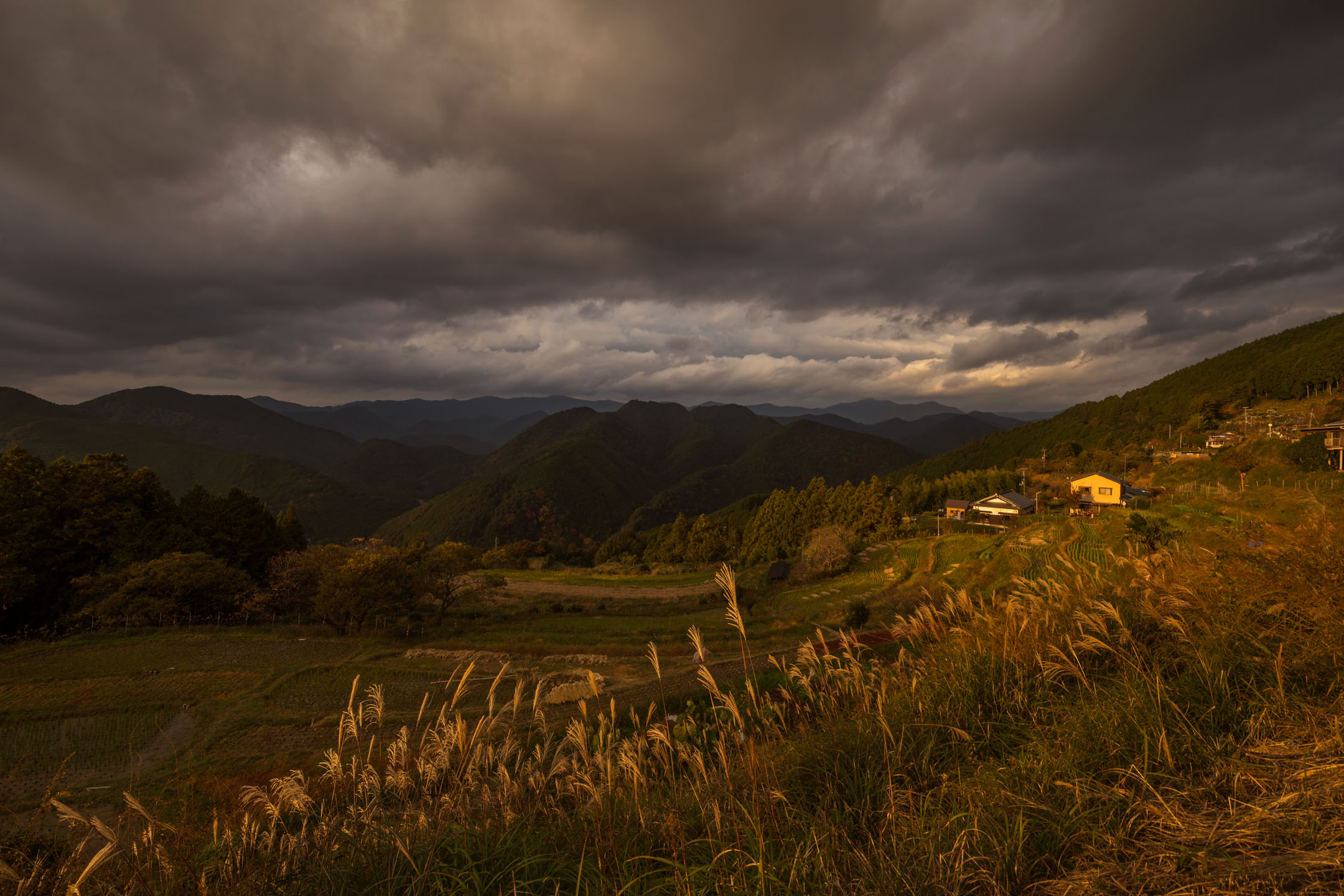Influenced by religion, history and nature, Japan’s
Kumano Kodo pilgrimage is more than a trek through sacred mountains.
It’s a puzzle that leads you back to yourself with every carefully chosen step.
“Do you know what shape your mind is?” a monk by the name of Nobuhiro Tamura asks. We’re standing late one autumn night in Okunoin, a thousand-year-old cemetery in Koyasan, the center of Shingon Buddhism. This major sect believes the secrets of life are found through meditation and, in a few, choice words, Nobu has given us a lot to ponder below 600-year-old cedars that scrape together high above this otherworldly setting. A jovial monk, he doesn’t wait for an answer. Our mind, Nobu says, is the shape of the moon. Like the lunar orb, it’s in constant flux. Full one day, ebbing a week later. Yet, wherever we find ourselves in that cycle, eventually, just like the moon, our minds will be full again. These are brain-bending thoughts, surrounded as we are by centuries of Japanese history condensed into more than 200,000 moss-covered markers, tombstones and mausoleums, the immortal remains of once-powerful shoguns, a handful of emperors and, most importantly, Kukai, Shingon’s founder, who is widely seen as the father of Japanese culture.
– Chris Kucway, Editor-in-Chief, Travel+Leisure Southeast Asia
Together for nine days this past November, Chris and I trekked 90km of the Kumano Kodo, a 900-year-old pilgrimage on Japan’s Kii Peninsula, “a mountainous thumb of land south of Osaka that takes in Kumano Sanzan, the three grand Shinto shrines found at Hongu, Nachi and Shingu.” It’s one of only two pilgrimages preserved as a UNESCO World Heritage Site, and it was nothing short of a magical experience.
As Chris so wonderfully articulates in this month’s Travel + Leisure cover story, “the Kumano Kodo has many layers. As a pilgrimage, it’s a mental puzzle, a key that partly unlocks the syncretism between Buddhism and Shintoism in Japan. Our trek is set up to follow a pattern of death, rebirth and life: you die once but are regenerated on the Kumano Kodo, a Japanese expression points out, one of the many mysteries hidden within this peninsula.”
Perhaps, then, it was natural for me to to spend the many hours of peaceful hiking through “stands of Japanese cedar and pine, carpets of red maple leaves [and] vivid mossy stepping stones” meditating about loss and grief.
I am not a terribly religious person, but a beloved family member recently passed away, and throughout my (literal and spiritual) journey along the Kumano Kodo, I couldn’t help but think about her and consider the impact of both her life and her death upon me. Given the Shinto belief that one’s spiritual energy, or kami, is released and recycled upon death — and that natural environments like waterfalls and mountains, are places in which the kami reside — it seems almost inevitable that my thoughts would drift deep reflection upon this person’s life, our relationship and the close human connection we shared during her lifetime.
Following is the cover and feature that I photographed and Chris wrote over those nine days we spent together on the Kumano Kodo with Walk Japan, our minds moon-shaped and “forever curious about what lies around the next corner”.
Browse a larger collection of the photography I made on the Kumano Kodo pilgrimage.



1 Comment
Join the discussion.
[…] http://scottawoodward.com/blog/kumano-kodo/ […]